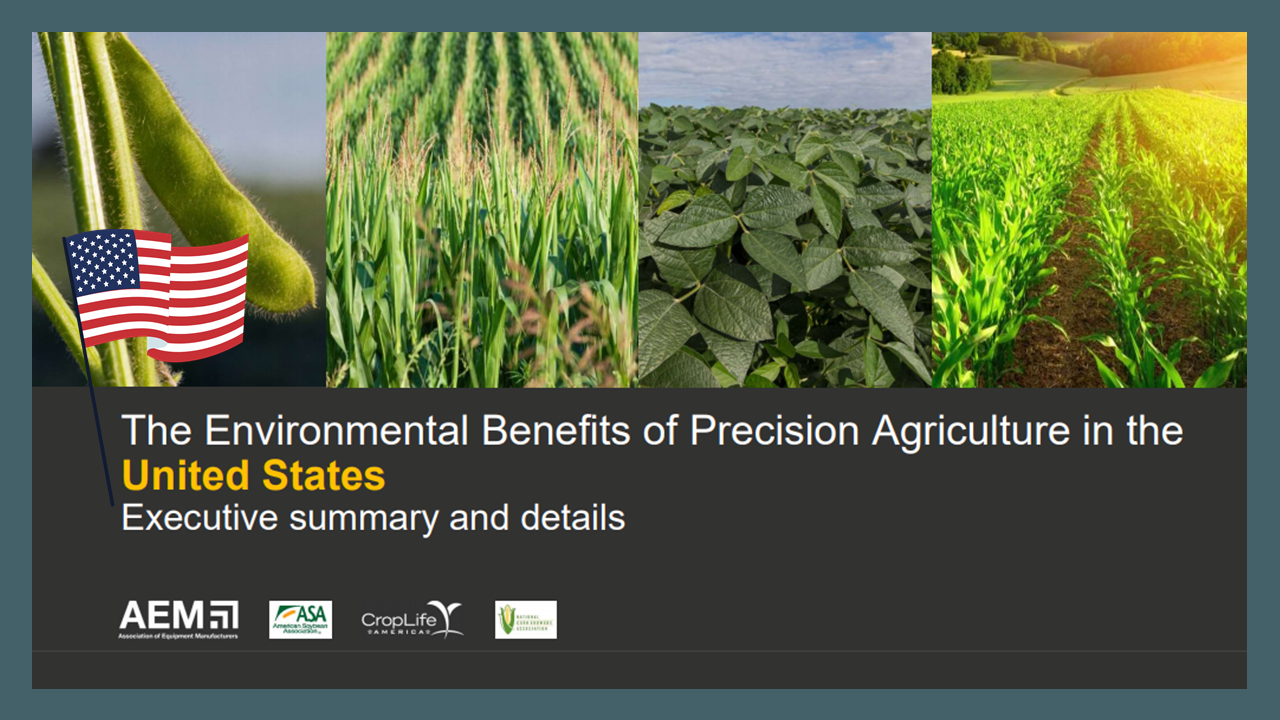The Environmental Benefits of Precision Agriculture

The objective for the project was to quantify the environmental benefits of precision agriculture (P.A.) in the United States.
Key features:
- Many technologies enable precision agriculture.
- Five key environmental benefits were identified to be quantified as a result of P.A. technology adoption.
- The crops studied included a range of row crops, broad acre non-row crops, roots and tubers, and forage.
- A model was built for each of the five environmental benefits, capturing data and contributions from each of the relevant P.A. technology areas.
- Each of these five environmental benefits directly links to two or more of USDA’s 3 sustainability pillars.
- Over the last 18 years, the growth in corn and soybean yields has coincided with the widespread adoption of precision agriculture technologies
- Productivity has increased an estimated 4% as a result of current P.A. adoption and has the potential to further increase 6% with broader P.A. adoption.
- Precision agriculture has improved fertilizer placement efficiency by an estimated 7% and has the potential to further improve an additional 14% with broader adoption of P.A. technologies.
- Herbicide use has been reduced by an estimated 9% as a result of current improved P.A. application practices.
- Fossil Fuel use has decreased an estimated 6% as a result of current P.A. adoption.
- Water use has decreased an estimated 4% as a result of current P.A. adoption.

